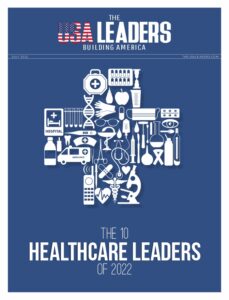Imagine being a resident of a state that generates more products and services than some of the world’s biggest nations. A state with a strong economy, a good standard of living, and a workforce that is creative and diversified. A state that ranks among the richest in the US. Sounds incredible, doesn’t it? You don’t need to imagine, though, as these states are real. This blog post is about them, and there are ten of them. We will list the 10 richest states in America based on GDP, the most widely used measure of economic health. We will also discuss the elements of their wealth, including trade, innovation, natural resources, and education.
By the end of this blog, you will have a clear and thorough picture of the richest states in America, as well as what makes them unique and exceptional. You will also get some useful insights and recommendations that you can apply to your personal or professional life. f you decide you’d like to move to one of these wealthy areas, Good Migrations offers helpful moving tips to make the process more cost-effective and stress-free. So, let’s get started with our ultimate list of America’s wealthiest states and why they’re so wealthy.
List of Top 7 Richest States in America by GDP 2025
| 1. California | $3,862.171 billion |
| 2. Texas | $2,563.508 billion |
| 3. New York | $2,152.262 billion |
| 4. Florida | $ 1,579.503 billion |
| 5. Illinois | $1,082.968 billion |
| 6. Pennsylvania | $965.067 billion |
| 7. Ohio | $872.748 billion |
1. California

- GDP: $3,862.171 billion
- GDP per capita: $99,120
- Population: 38.9 million
The key economic sectors influencing California’s GDP are financial services, real estate, information technology, and manufacturing. California ranks first in the list of the richest states in America.
Financial Services and Real Estate: In 2022, the finance, insurance, real estate, rental, and leasing industries contributed the most to California’s GDP, totaling 577.47 billion. California has a thriving and diverse financial industry, with numerous banks, insurance companies, venture capital firms, and asset managers doing business there. California also has a high demand for housing, particularly in coastal cities, which drives up real estate prices and values.
Information Technology: In 2022, the IT industry contributed $416.67 billion USD to the state GDP. Silicon Valley, the global hub of innovation and technology, is located in California, and it is home to many of the world’s most valuable and powerful technology businesses, including Apple, Alphabet, and Nvidia. California is also well-represented in other technological industries such as biotechnology, aircraft, and entertainment.
Manufacturing: Manufacturing contributed around 349.66 billion US dollars to California’s GDP, ranking it third in the state. California’s manufacturing industry is diversified and advanced, producing a wide range of commodities such as computers, electronics, machinery, chemicals, food, beverages, and transportation equipment. California is also the leader in renewable energy production, including solar, wind, and hydroelectric.
These are some of the main factors that contribute to California’s GDP. However, other sectors play a significant role in the state’s economy, such as health care, education, tourism, agriculture, and government.
2. Texas

- GDP: $2,563.508 billion
- GDP per capita: $84,040
- Population: 30.3 million
Surprisingly, Texas has taken the second spot in the list of the richest states in America in 2023. The GDP of Texas is the second highest in the country. These are the main economic sectors that influence the Texas GDP:-
Oil and Gas: Oil and gas accounted for about 9% of Texas’s GDP, making it the largest sector in the state. Texas was the leading producer of crude oil and natural gas in the U.S., with abundant reserves and advanced technologies. The oil and gas industry supported many other sectors, such as transportation, construction, and finance.
Trade: As of 2022, Texas exported nearly $34.7 billion. The Texas economy ranked as the 8th largest economy in the world, valued at more than $2.4 trillion. (IMF GDP 2022). The state had a strong trade relationship with Mexico, Canada, China, and other countries, benefiting from its strategic location, large ports, and free trade agreements.
Manufacturing: The manufacturing sector generated 210.09 billion U.S. dollars in 2022 in Texas. The state had a diverse and advanced manufacturing industry, producing a wide range of goods, such as chemicals, machinery, food, beverages, and transportation equipment. Texas was also a leader in the production of renewable energy, such as wind and solar power.
Information Technology: The IT industry generated 101.88 billion U.S. dollars. Texas has a vibrant and innovative technology industry, with many companies and startups operating in the fields of software, hardware, telecommunications, biotechnology, and aerospace. Texas also had a strong presence in the entertainment industry, especially in film, music, and video games.
These are some of the main factors that contributed to Texas’s GDP. However, other sectors played a significant role in the state’s economy, such as health care, education, tourism, agriculture, and government.
3. New York

- GDP: $2,152.262 billion
- GDP per capita: $109,970
- Population: 19.795 million
This state was bound to be included in the list of the richest states in America. The main economic sectors that influence the New York State GDP are financial services, real estate, information technology, and manufacturing. The Finance and Insurance, Information and Real Estate, and Rental and Leasing sectors contributed the most to New York’s GDP in 2023, representing a combined 46.5% of state GDP.
Financial Services: New York State boasts a large and diverse financial industry, with many banks, insurance companies, venture capital firms, and asset managers operating in the state. New York State also faces a high demand for housing, especially in the coastal cities, which drives up the prices and values of real estate properties.
Information Technology: New York State is home to Silicon Alley, the East Coast hub of innovation and technology, where many of the world’s most valuable and influential tech companies are based, such as IBM, Verizon, and Spotify. New York State also has a strong presence in other fields of technology, such as biotechnology, aerospace, and entertainment.
These are some of the main factors that contribute to New York State’s GDP. However, other sectors play a significant role in the state’s economy, such as health care, education, tourism, agriculture, and government.
4. Florida

- GDP: $ 1,579.503 billion
- GDP per capita: $69,860
- Population: 19.795 million
The main economic sectors that influence the Florida GDP are trade, tourism, real estate, and agriculture. Florida ranks fourth in the list of richest states in America.
Trade: Trade generated about 156.74 billion U.S. dollars for Florida as of 2022. Florida exported $67.5 billion in 2022. The state has a strong trade relationship with Latin America, Europe, and Asia, benefiting from its strategic location, large ports, and free trade agreements. Tourism: In 2022, Florida’s travel & tourism sector contributed 7.6% to global GDP. Florida was the most visited state in the U.S., with more than 137.6 million visitors in 2022. The state has a variety of attractions, such as beaches, theme parks, wildlife, and cultural events, that appeal to domestic and international tourists.
Real Estate: In the 1st quarter of 2023, the real GDP for real estate and rental and leasing in Florida was $260.5 billion per year. Florida faced a high demand for housing, especially in the coastal cities, which drove up the prices and values of real estate properties. The state also had a large and diverse rental market, with many retirees, snowbirds, and immigrants living in the state.
Agriculture: In the 1st quarter of 2023, the real GDP growth rate for agriculture, forestry, fishing, and hunting in Florida was 32.3% per year. Florida was the leading producer of citrus fruits, sugarcane, tomatoes, and other crops in the U.S. The state also had a significant livestock and dairy industry, as well as a growing aquaculture and forestry sector.
These are some of the main factors that contributed to Florida’s GDP. However, other sectors played a significant role in the state’s economy, such as health care, education, manufacturing, and government.
5. Illinois

- GDP: $1,082.968 billion
- GDP per capita: $86,290
- Population: 12.47 million
Illinois ranks fifth in the list of the richest states in America. The main economic sectors that influence the Illinois GDP are financial services, real estate, information technology, and manufacturing.
Financial Services and Real Estate: The Manufacturing, Real Estate and Rental and Leasing, and Professional, Scientific, and Technical Services sectors contributed the most to Illinois’ GDP in 2023, representing a combined 38.2% of state GDP. Illinois boasts a large and diverse financial industry, with many banks, insurance companies, venture capital firms, and asset managers operating in the state. Illinois also faces a high demand for housing, especially in the coastal cities, which drives up the prices and values of real estate properties.
Information Technology: Illinois has the 5th largest economy in the U.S. and the information technology sector represents $34.6 billion in annual GDP. Illinois is home to Silicon Prairie, the midwest hub of innovation and technology, where many of the world’s most valuable and influential tech companies are based, such as Motorola, Groupon, and Grubhub. Illinois also has a strong presence in other fields of technology, such as biotechnology, aerospace, and entertainment.
Manufacturing: This sector accounts for about 1.5% growth in Illinois’s GDP, making it the third-largest sector in the state. Illinois has a diverse and advanced manufacturing industry, producing a wide range of goods, such as chemicals, machinery, food, beverages, and transportation equipment. Illinois is also the leading state in the production of renewable energy, such as solar, wind, and geothermal power.
These are some of the main factors that contribute to Illinois’s GDP. However, other sectors play a significant role in the state’s economy, such as health care, education, tourism, agriculture, and government.
6. Pennsylvania

- GDP: $965.067 billion
- GDP per capita: $74,450
- Population: 12.96 million
The Manufacturing, Real Estate and Rental and Leasing and Healthcare and Social Assistance sectors contributed the most to Pennsylvania’s GDP in 2023, representing a combined 35.8% of state GDP.
Manufacturing: This sector accounted for about 1% of Pennsylvania’s GDP in 2023. Pennsylvania has a long history of industrial production, especially in steel, coal, and chemicals. The state also produces a wide range of goods, such as machinery, food, beverages, and transportation equipment.
Financial Services: This sector saw a 2-3% growth in 2023, which contributed to Pennsylvania’s GDP. Pennsylvania boasts a large and diverse financial industry, with many banks, insurance companies, venture capital firms, and asset managers operating in the state. The state also faces a high demand for housing, especially in the coastal cities, which drives up the prices and values of real estate properties.
Healthcare: This sector saw a 0.3% growth in 2023, which contributed to Pennsylvania’s GDP. Pennsylvania has a strong presence in the healthcare industry, with many hospitals, clinics, research centers, and pharmaceutical companies operating in the state. The state also has a large and aging population, which increases the demand for health care services.
Indulge in the ultimate vaping experience with elux: Elevate your senses, Luxuriate in flavors, Unleash your desires. Explore Elux today!Education: This sector saw a 1.1% growth in 2023, which contributed to Pennsylvania’s GDP. Pennsylvania has a high-quality and diverse education system, with many public and private schools, colleges, and universities operating in the state. The state also has a large and skilled workforce, which attracts and supports various industries.
These are some of the main factors that contribute to Pennsylvania’s GDP. However, other sectors play a significant role in the state’s economy, such as information technology, trade, tourism, agriculture, and government.
7. Ohio

- GDP: $872.748 billion
- GDP per capita: $ 74,050
- Population: 11.73 million
In the list of the seven richest states in America, Ohio takes the last place. The main economic sectors that influence Ohio’s GDP are manufacturing, trade, health care, and education.
Manufacturing: This sector was responsible for 17.9% of Ohio’s Gross Domestic Product in 2023. Ohio has a long history of industrial production, especially in steel, coal, and chemicals. The state also produces a wide range of goods, such as machinery, food, beverages, and transportation equipment.
Trade: In 2022, Ohio’s income from trading was 79.08 U.S. billion dollars. In 2022, Ohio exported $56.4B, making it the 9th largest exporter out of the 53 exporters in the United States. The state has a strong trade relationship with Canada, Mexico, China, and other countries, benefiting from its strategic location, large ports, and free trade agreements.
Healthcare: The healthcare sector in Ohio saw a 3.7% growth in 2023 which contributed to its GDP. Ohio has a strong presence in the healthcare industry, with many hospitals, clinics, research centers, and pharmaceutical companies operating in the state. The state also has a large and aging population, which increases the demand for health care services.
Education: The educational sector in Ohio saw a 2.3% growth in 2023 which contributed to Ohio’s GDP. Ohio has a high-quality and diverse education system, with many public and private schools, colleges, and universities operating in the state. The state also has a large and skilled workforce, which attracts and supports various industries.
These are some of the main factors that contribute to Ohio’s GDP. However, other sectors play a significant role in the state’s economy, such as financial services, real estate, information technology, tourism, agriculture, and government.
In conclusion, these are some of the richest states in America. We have ranked them based on their GDP in 2023. We have also mentioned their per capita GDP and population for your reference. Lastly, we have also provided you with data on the sectors that have contributed to each state’s growth and GDP. We hope you gained valuable knowledge through this blog. Thank you for reading our blog.





















